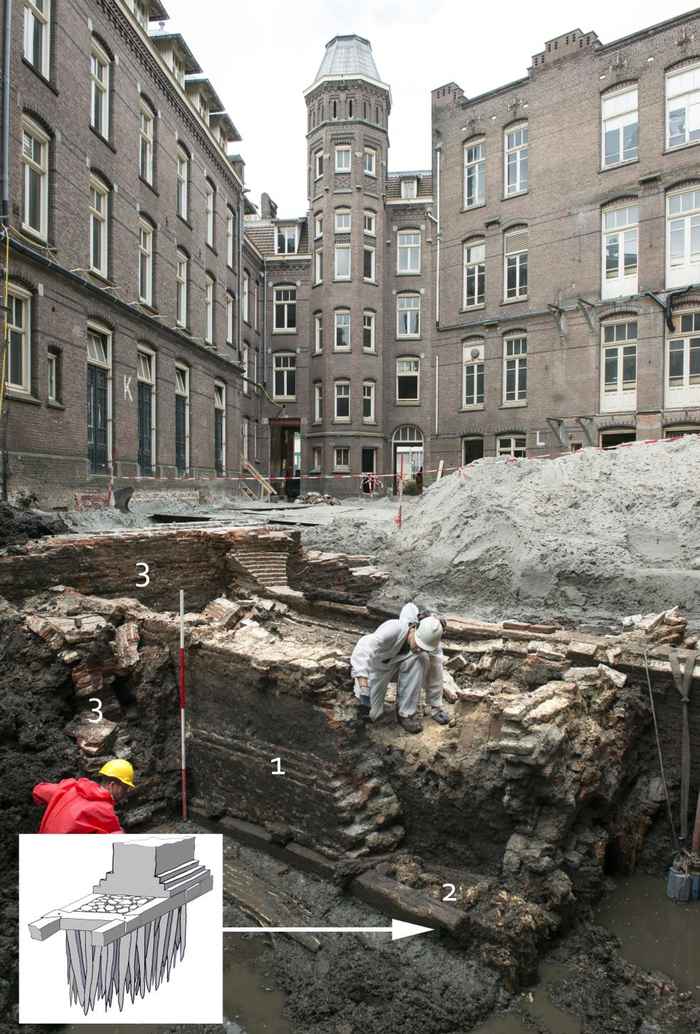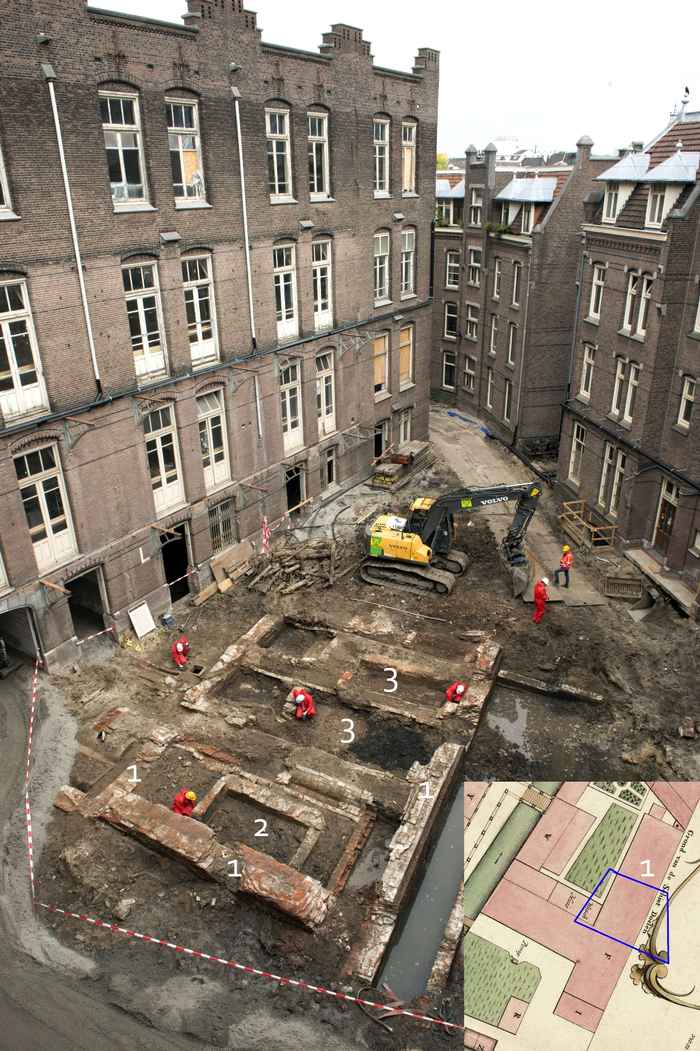Update on archaeological finds at Binnengasthuis premises
24 November 2020
From convent to hospital
In the late 14th century, embankments were created to raise parts of the ‘Uterse Nesse’ – a swampy patch of ground surrounded by a bend in the Amstel river – and make it suitable for building. Two convents were built on the site: the Sint-Marienveld Convent in 1389 and the women's convent of Ter Lely in 1402, better known as the Oude and Nieuwe Nonnenklooster (Old and New Nuns’ Convent), respectively. In 1578, the convents were closed and ownership of their property was transferred to the Regents of the Sint-Pietersgasthuis and Onze Lieve Vrouwe Gasthuis hospitals. The now-vacant convent buildings were repurposed, and a variety of new structures were erected as well. From the 19th century on, the Sint-Pietersgasthuis became known as the Binnengasthuis. And it is this Binnengasthuis – which consists of the Tweede Chirurgische Kliniek and Zusterhuis buildings – which is now being renovated and converted to the new University Library.
Phase one
When excavation work began in the courtyard of the Tweede Chirurgische Kliniek in the summer of 2019, the City of Amsterdam's Knowledge Centre for Monuments and Archaeology (MenA) began its archaeological investigation as well. This dig uncovered the remains of the 17th-century Sint-Pietersgasthuis, along with the ruins of buildings from the monastic period. A subsequent analysis of the annual rings in the wood used in the foundation – dendrochronological analysis – made it possible to date the oldest structure to around 1560. This building consisted of masonry walls atop a so-called grid foundation, a construction in which piles are driven into the spaces of a wooden framework, i.e. a grid. While this construction technique is found primarily in massive structures such as churches and defensive fortifications, it was also used when building atop embankments in a waterlogged area – such as within this bend of the Amstel. In 1589, after the convents had been closed in 1578, this building became part of the plague house. From 1626, it belonged to the 'Verbandhuys' (Bandages House), a department of surgery in the Sint-Pietersgasthuis hospital. Around the mid-18th century, this ancient building was demolished to make room for a newly constructed ‘Verbandhuys’, which stood on this site until 1897.


Phase two
The Monuments and Archaeology department began phase two of its archaeological investigation in the summer of 2020. The deeper the archaeologists dig, the farther back in time they go. By examining the layers of soil in the excavation, they were able to establish that the swampy ground of the 14th century was a flooded bog landscape, with alternating layers of reed and woodland peat, mixed with clay, lying over four metres below street level. Embankments were then raised in the peat bog, forming a soil profile that picks up seamlessly where that of last year's dig left off and completing the story of how the Binnengasthuis site was developed at this bend in the Amstel River.
Cooperation between the city and the UvA
MenA is cooperating with the UvA Archaeology department and the UvA and VU Amsterdam's joint institute of archaeology, the Amsterdam Centre for Ancient Studies and Archaeology (ACASA). While it was not possible to involve students in field work at the excavated construction site, they may have an opportunity to participate in the data recovery phase, during which the trace evidence, structures and finds from the dig will be analysed. A portion of the specialised analysis will be carried out at ACASA as well – more on that later. While the data recovery phase of the research is expected to take most of 2021, it is already clear that this archaeological investigation will yield a great many details to further our insight into how this soggy bend in the Amstel became the Binnengasthuis premises.
More information about the new UB can be found on the information page.